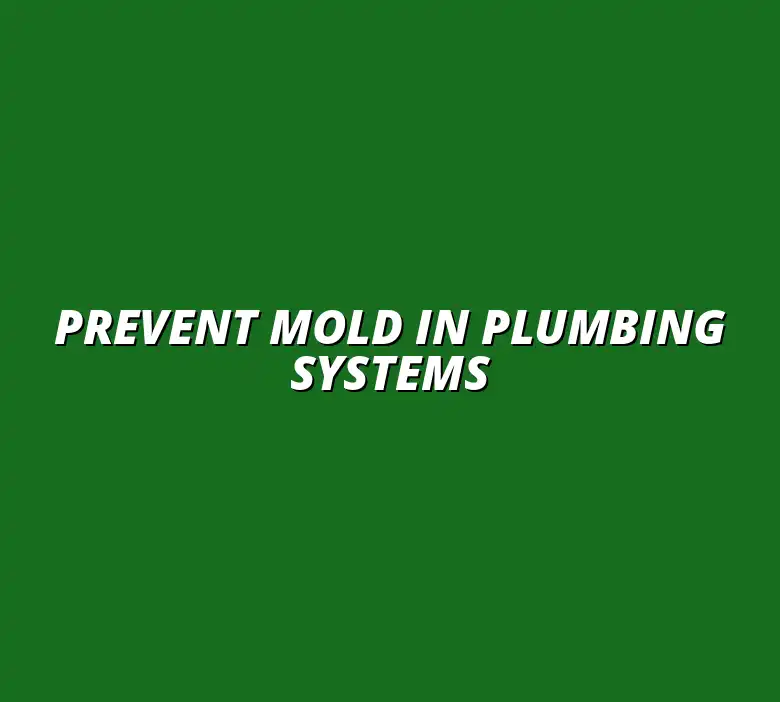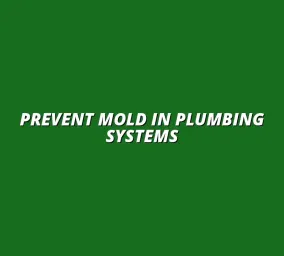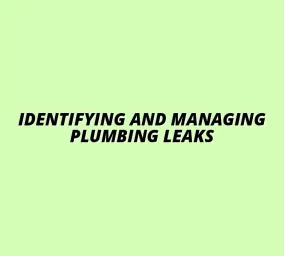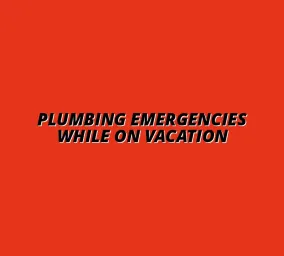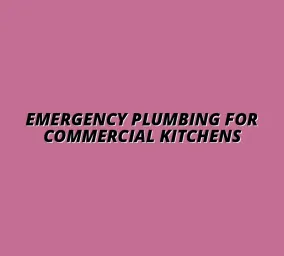Prevent Mold in Plumbing Systems
Understanding Mold and Mildew Growth in Plumbing Systems
Mold and mildew are two types of fungi that can thrive in damp environments, particularly in our homes. They can grow in a variety of places, but plumbing systems are particularly vulnerable due to the moisture and humidity levels often found there. Understanding these organisms is crucial for effective prevention and management.
Mold is typically dark green or black, while mildew appears as a white or gray powdery substance. Both can emit musty odors and often indicate an underlying moisture problem. If you notice any signs of mold or mildew, it's essential to address the issue quickly to avoid further complications.
What Are Mold and Mildew?
Defining Mold and Mildew in Household Contexts
Mold and mildew are terms often used interchangeably, but they refer to different types of fungi. Mold can penetrate surfaces and can cause more extensive damage than mildew, which usually stays on the surface. Both of them thrive in warm, damp spaces, making household plumbing systems a perfect breeding ground.
In a household context, mold can appear in areas with water leaks or high humidity. It can grow on walls, ceilings, and even within the plumbing itself. Understanding these definitions helps homeowners identify and tackle problems early. For example, understanding how to prevent water heater leaks is a crucial first step in mold prevention.
Health Risks Associated with Mold Exposure
Exposure to mold and mildew can lead to a range of health issues, especially for individuals with asthma or allergies. Common symptoms include coughing, sneezing, and skin irritation. Long-term exposure may even result in more severe respiratory problems.
Some molds produce *mycotoxins*, which can have serious health effects if inhaled or ingested. It's crucial to take mold growth seriously and address any issues promptly to protect your family’s health. If you suspect a plumbing leak that could be contributing to mold growth, it’s vital to take quick action; learn more about the urgent plumbing emergency warning signs you should be aware of.
The Conditions That Foster Mold and Mildew
Humidity and Moisture Levels in Plumbing Systems
High humidity levels are one of the primary conditions that lead to mold and mildew growth. Plumbing systems often create a warm, moist environment, especially around leaks or condensation on pipes. Keeping humidity levels low is essential for preventing fungal growth.
In general, indoor humidity should be kept below 60%. Utilizing humidistats and monitoring moisture levels can help homeowners manage their indoor environment effectively. Addressing issues like tree roots damaging plumbing can also significantly reduce moisture problems.
Common Plumbing Issues Leading to Mold Growth
A variety of plumbing issues can contribute to mold development, including:
- Leaky pipes
- Overflowing sinks and bathtubs
- Clogged drains
- Condensation on cold surfaces
- Improperly sealed fixtures
Addressing these issues promptly can significantly reduce the chances of mold and mildew taking hold in your home. Regular inspections and maintenance are key to preventing these problems from escalating. For instance, installing a water softener can help prevent many issues; find out more about how to prevent plumbing issues with water softeners.
Responding to Mold and Mildew Growth
Finding mold or mildew in your home can be alarming, but it’s essential to act quickly. The first steps you take can significantly impact the situation. Addressing the problem head-on not only helps protect your plumbing but also keeps your home safe and healthy for everyone.
When you discover mold, your immediate reaction matters! Timely action can prevent further spread and damage. Let’s take a closer look at what you should do right after you find mold in your plumbing systems.
Immediate Actions to Take Upon Discovery
If you notice mold in your plumbing areas, the first thing to do is assess the situation. Make sure to protect yourself by wearing gloves, a mask, and goggles to avoid inhaling spores or coming into direct contact with mold. Taking these precautions is crucial!
Here’s a list of steps to take when you find mold:
- Isolate the affected area by closing doors or using plastic sheeting.
- Turn off water supply if the mold is related to a leak.
- Dry the area thoroughly using fans or dehumidifiers.
- Use a mixture of water and detergent to scrub away visible mold.
- Dispose of any contaminated materials that can’t be cleaned.
After performing these initial actions, you might still need further help. Some mold issues can be extensive and require professional attention. Preventing mold in your bathroom is especially important; find helpful tips on preventing mold in bathroom pipes.
Safely Removing Mold from Plumbing Areas
Once you’ve taken immediate actions, it’s time to focus on safe removal. Depending on the extent of the mold, this could be a DIY job or one that requires experts. It’s vital to use the right cleaning solutions and methods to avoid spreading spores further.
Here’s how to safely remove mold:
- Utilize a commercial mold cleaner or a mixture of vinegar and water.
- Scrub surfaces with a brush to remove mold residue effectively.
- Ensure proper ventilation while cleaning to disperse spores.
- Seal off the area with plastic to prevent mold from escaping.
- Consider using an air purifier with a HEPA filter to capture airborne spores.
Sometimes, removing mold from plumbing systems can be challenging. If the situation seems severe or unsafe, it’s best to call in professionals. If you're experiencing a serious plumbing issue, such as frozen pipes, addressing it quickly is crucial.
When to Call in Professional Mold Remediation Services
Knowing when to seek professional help is crucial. If mold covers a large area, if it keeps returning, or if it’s hidden behind walls or other structures, don’t hesitate to reach out for expert assistance. Professionals have the tools and knowledge to handle mold issues safely and effectively.
Consider calling for help if:
- The affected area is larger than 10 square feet.
- You have health concerns that could be exacerbated by mold exposure.
- Mold keeps reappearing despite your cleaning efforts.
- There’s a strong, persistent odor of mold or mildew.
- You suspect mold in hidden areas such as inside walls or ceilings.
Acting quickly not only protects your home but also keeps your family healthy! If you need a plumber in Birmingham, consider contacting a local professional such as those listed on this plumber directory.
Long-term Solutions for Mold Prevention
Once you’ve dealt with a mold issue, it’s essential to put preventive measures in place. Long-term solutions can ensure that mold doesn’t return and that your plumbing systems remain intact. Making these changes can significantly improve your home’s health and safety.
Here are some effective methods for long-term prevention:
- Ensure proper grading around your home to direct water away from the foundation.
- Install gutter systems to prevent water from pooling near your home.
- Seal any cracks in walls and foundations where moisture can seep in.
- Use waterproof paints and materials in high-moisture areas.
- Schedule regular inspections of your plumbing for leaks and damage.
Implementing these strategies can provide lasting protection against mold growth!
Implementing Home Improvement Projects to Combat Moisture
Simple home improvements can also make a big difference. Projects aimed at reducing humidity and improving air circulation can greatly reduce the risk of mold. Here are some ideas to consider:
- Install exhaust fans in bathrooms and kitchens.
- Add vents in attics and crawl spaces for better airflow.
- Consider installing a sump pump in basements prone to flooding.
- Upgrade insulation in walls and attics to prevent condensation.
- Use moisture-absorbing materials in areas like basements.
By investing in these improvements, you’ll create a home environment that’s less hospitable to mold!
Incorporating Smart Technology for Monitoring Humidity
Smart technology can help you keep an eye on humidity levels in your home. Devices that monitor and control moisture are becoming increasingly popular and effective. Consider these options!
- Smart thermostats that regulate temperature and humidity.
- Humidity sensors that alert you when levels rise above normal.
- Smart dehumidifiers that adjust operation based on real-time data.
- Home automation systems that integrate with your HVAC to optimize air circulation.
Using technology not only adds convenience but also helps maintain a mold-free environment!
Summary of Effective Mold and Mildew Prevention
In summary, responding to mold and mildew growth requires immediate action and long-term planning. By understanding the right steps to take and implementing preventative measures, you can ensure your home stays safe and comfortable. Remember, the key to avoiding mold problems is being proactive!
The Importance of Proactive Measures
Creating a comprehensive mold and mildew prevention plan is vital for every homeowner. Planning ahead gives you a roadmap for maintaining a healthy living space. Here are some essential components of an effective plan:
- Regularly check areas prone to moisture, like bathrooms and basements.
- Keep a log of any plumbing issues and repairs made.
- Educate your family on the signs of mold growth.
- Stay informed about best practices for mold prevention.
When everyone is involved, it makes a big difference!
Creating a Comprehensive Mold and Mildew Prevention Plan
To effectively combat mold and mildew, it’s essential to craft a plan that works for your home. This plan should include regular maintenance schedules and checklists to ensure nothing is overlooked.
Consider including the following in your prevention plan:
- Monthly inspections of plumbing systems.
- Seasonal checks for outdoor drainage and gutters.
- Proper cleaning routines in high-moisture areas.
- Regular updates to family members on mold education.
Having a plan not only helps keep your home safe but also enhances peace of mind.
Encouraging Consistent Home Maintenance Routines
Encouraging a routine of consistent maintenance can help everyone in the household stay informed and involved. Establishing regular check-ins can make a significant difference in early detection and prevention of mold growth.
Here's how to keep your home maintenance consistent:
- Set reminders for regular plumbing inspections.
- Hold family meetings to discuss any moisture-related concerns.
- Make cleaning high-moisture areas a weekly habit.
- Keep an open line of communication about any concerns or observations.
With regular upkeep, your home can remain a mold-free haven!
Engaging with Homeowners for a Mold-Free Environment
Creating a mold-free environment isn’t just an individual effort; it takes community engagement as well! Sharing knowledge and resources with others can lead to a collective impact on mold prevention.
Here are some ways to engage with fellow homeowners:
- Host community workshops about mold prevention.
- Share tips and resources through local social media groups.
- Encourage neighbors to start a neighborhood watch for mold inspections.
- Collaborate on bulk purchasing of mold prevention supplies.
Working together promotes a healthier community for everyone!
Resources for Homeowners to Learn More About Mold Prevention
Educating yourself and others about mold prevention is crucial. There are numerous resources available, from websites to local organizations, that can provide valuable information. Here’s a list of helpful resources:
- The Environmental Protection Agency (EPA) has guidelines for mold removal.
- Local health departments often offer workshops and literature.
- Online forums and communities provide shared experiences and solutions.
- Home improvement stores frequently host demonstrations and provide tips.
Utilizing these resources can empower homeowners to take control of their environments!
Encouraging Community Awareness and Action on Mold Issues
Lastly, raising awareness about mold problems in your community can lead to action and change. Simple conversations or community events can spark interest and motivate others to take preventive measures.
Consider these actions to promote community awareness:
- Organize local clean-up events focused on mold-prone areas.
- Provide informational flyers to neighbors about mold prevention.
- Start a community newsletter featuring mold awareness tips.
- Engage local media to highlight the importance of mold prevention.
By spreading awareness, you can help create a healthier environment for everyone!

